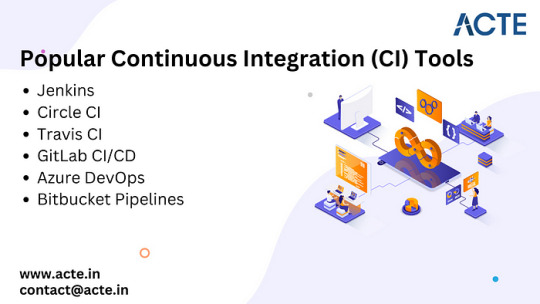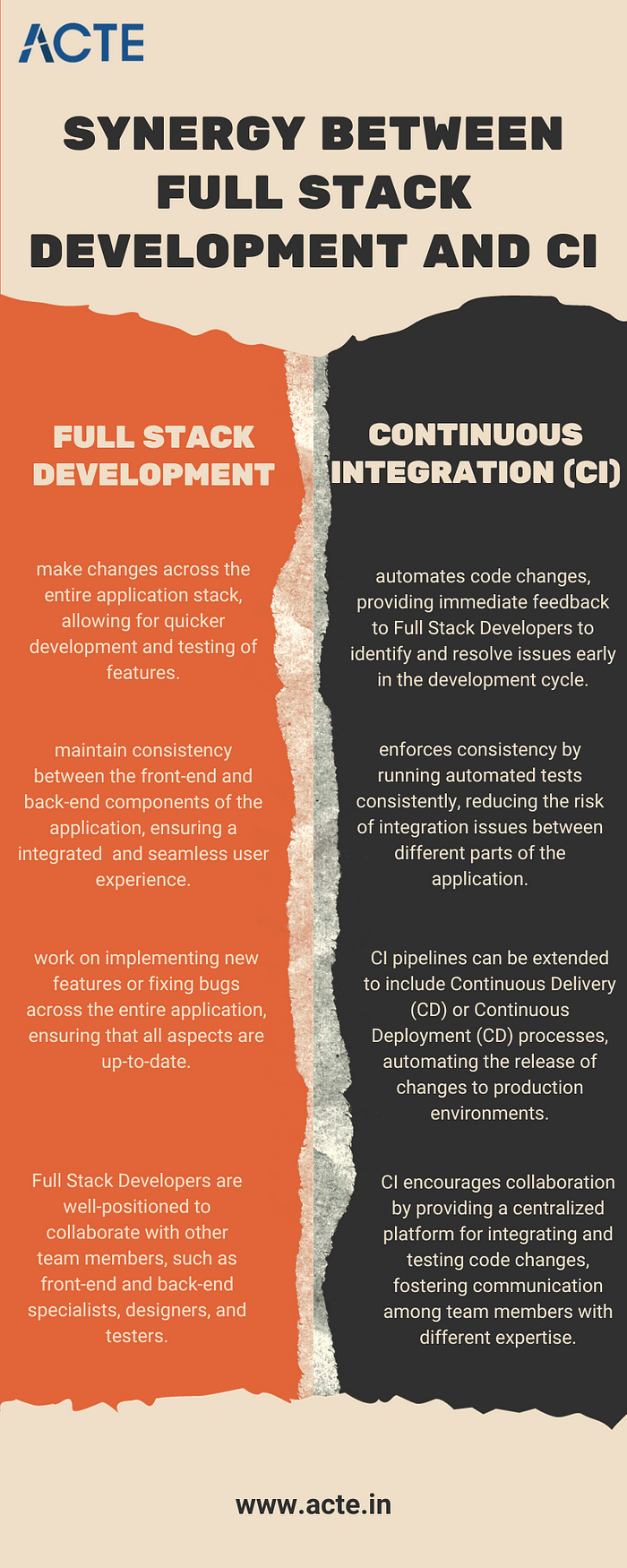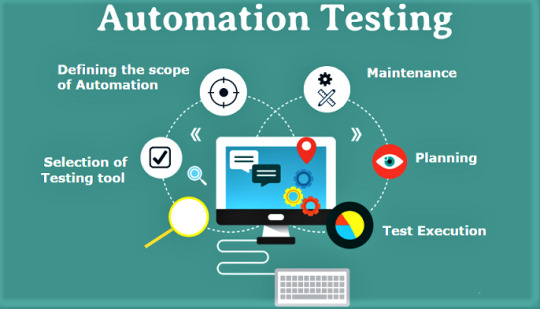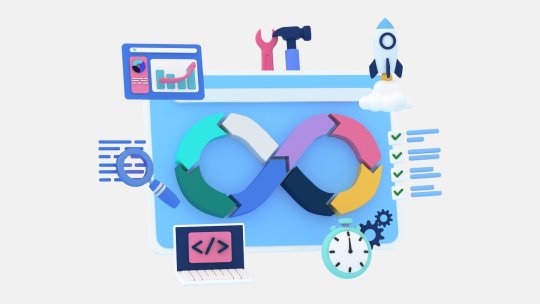#DevOps framework
Explore tagged Tumblr posts
Text
Discover the pivotal role of data governance in DevOps evolution. Build stronger foundations for compliance, security, and efficiency.
#Data Governance Framework#Devops Environment#Devops Framework#Devops Methodologies#Devops-Driven Data Governance#Robust Data Governance#Software Development Consulting Company#Stage Of Product Development
0 notes
Text
Discover how robust data governance shapes DevOps evolution, ensuring secure foundations & compliance. Uncover insights now!
#Data Governance Framework#Devops Environment#Devops Framework#Devops Methodologies#Devops-Driven Data Governance#Robust Data Governance#Software Development Consulting Company#Stage Of Product Development
0 notes
Text
Discover how robust data governance shapes DevOps evolution, ensuring secure foundations & compliance. Uncover insights now!
#Data Governance Framework#Devops Environment#Devops Framework#Devops Methodologies#Devops-Driven Data Governance#Robust Data Governance#Software Development Consulting Company#Stage Of Product Development
0 notes
Text
Discover how robust data governance shapes DevOps evolution, ensuring secure foundations & compliance. Uncover insights now!
#Data Governance Framework#Devops Environment#Devops Framework#Devops Methodologies#Devops-Driven Data Governance#Robust Data Governance#Software Development Consulting Company#Stage Of Product Development
0 notes
Text
Is the Agile Hype Over?
Agile hype has been around for over two decades, sweeping through industries with promises of faster delivery, empowered teams, and customer-centric value. But ask around today — from developers and product managers to executives — and you’ll hear a different tone. Burnout from endless sprints. Disillusionment with ceremonies. Frustration with rigid frameworks masquerading as flexibility. So…
#agile#Agile certifications#agile coaching#agile fatigue#Agile Frameworks#agile future#Agile Manifesto#Agile Transformation#DevOps#lean delivery#post-agile#product thinking#Scrum#Scrum Master#team autonomy
0 notes
Text
MLOps Engineer (12 Better Roles And Killer Responsibilities)

Bridge the Gap: MLOps engineers bridge the gap between data science and operations, ensuring smooth transitions of machine learning models from development to real-world use.
Deployment and Management: They handle deploying models in production environments, managing their performance, and ensuring version control.
Automation Champions: Automating the machine learning workflow is a core responsibility. They build pipelines to automate tasks like data cleaning, model training, and deployment.
Collaboration is Key: MLOps engineers collaborate with data scientists, DevOps, and IT teams to ensure successful deployments, infrastructure management, and efficient resource allocation.
Monitoring and Optimization: They monitor deployed models for accuracy, drift (performance degradation), and resource utilization. They troubleshoot issues and work to optimize model performance and efficiency.
Continuous Learning: Staying up-to-date on the latest MLOps tools, frameworks, and best practices is crucial. They continuously evaluate and improve the MLOps pipeline to stay ahead of the curve.
https://aitech.studio/ai-career-options/mlops-engineer-roles/
0 notes
Text

#coding#training#angular#laravel#php#php framework#php programming#php training#phpwebsitedevelopment#placements#javaprogramming#javascript#python#devops#reactjs#django#nodejs
0 notes
Text
Java is an established programming language and an ecosystem that has dominated the software business for many years. According to TIOBE index rankings, Java was the #1 popular programming language in 2020 and the fourth best currently for bespoke software development.
The key factor for its intensive popularity is its security, which is why it is extensively used in a broad range of disciplines such as Big data processing, AI application development, Android app development, Core Java software development, and many more. It provides a large set of tools and libraries, as well as cross-platform interoperability, allowing customers to build applications of their choice.
#java development#future of java#java trends#java developer for hire#Java programming language for cloud-native development#Java frameworks for microservices architecture#Java ecosystem tools for DevOps automation#Java web development trends in 2023#Agile Java development with DevOps best practices#software development company
0 notes
Text
The DevOps Connection: Full Stack Development and Continuous Integration
In today’s fast-paced software development landscape, teams need to be agile, efficient, and adaptable to keep up with changing business requirements and user demands. DevOps practices, which emphasize collaboration, automation, and continuous improvement, have become a popular approach to achieving these goals. One key aspect of DevOps is Continuous Integration (CI), which aims to automate the building, testing, and integration of code changes to ensure the quality and consistency of software products.

Another important area of software development is Full Stack Development, which refers to the ability to work on both the frontend and backend aspects of web and application development. Full stack developers have a broad range of skills and can work on various parts of a project, from user interface design to database management and server-side logic. In this blog post, we will explore the connection between DevOps, Full Stack Development, and Continuous Integration. We will examine the benefits and challenges of implementing these practices and provide real-world examples of organizations that have successfully adopted them.
I. Understanding Full Stack Development
Defining Full Stack Development
Continuous Integration is a software development practice that aims to automate the building, testing, and integration of code changes. It involves using automated tools and processes to ensure that code changes are integrated quickly and efficiently into the main codebase. The goal of CI is to detect and address issues early in the development cycle before they become more complex and costly to fix.
The Role of Full Stack Developers
Full stack developers are responsible for developing and maintaining web and application software. They work on all aspects of a project, from UI/UX design to server-side logic. They are also responsible for ensuring that the software is scalable, maintainable, and secure. They need to have a deep understanding of software development principles, programming languages, and development frameworks.
II. Continuous Integration (CI) in Full Stack Development
What Is Continuous Integration (CI)?
Continuous Integration is a software development practice that aims to automate the building, testing, and integration of code changes. It involves using automated tools and processes to ensure that code changes are integrated quickly and efficiently into the main codebase. The goal of CI is to detect and address issues early in the development cycle, before they become more complex and costly to fix.
CI Tools and Practices
There are several popular CI tools and platforms, including Jenkins, Travis CI, and CircleCI. These tools automate the building, testing, and deployment of code changes, making the process more efficient and reliable. CI best practices include version control integration, automated testing, and deployment pipelines. These practices help maintain code quality and consistency and ensure that code changes are integrated quickly and efficiently into the main codebase.

III. The Synergy between Full Stack Development and CI
Collaboration and Communication
DevOps practices foster collaboration and communication between full stack developers and other team members. This collaboration helps ensure that code changes are integrated quickly and efficiently into the main codebase. Transparency is also essential in the development process. This transparency helps ensure that everyone involved in the project is aware of what is happening and can provide feedback and input as needed.
Code Integration and Testing
Full stack developers can benefit from CI by automating the integration of frontend and backend code. This automation helps ensure that code changes are integrated quickly and efficiently into the main codebase. Automated testing is also essential in identifying and resolving issues early in the development cycle.
Continuous Deployment and Delivery
CI can be extended to continuous deployment (CD) and continuous delivery (CD) processes. Automating the deployment of full stack applications is advantageous because it reduces the time and effort required to deploy changes. Deploying changes without disrupting the user experience is also important. Strategies for achieving this goal include using canary deployments and feature flags.

IV. Challenges and Considerations
Overcoming Challenges
Implementing CI for full stack development can be challenging. Some common challenges include managing code complexity, coordinating development efforts, and ensuring that all team members are using consistent development practices. Solutions to these challenges include using automated testing tools, establishing clear development guidelines, and providing training and support to team members.
Security and Compliance
Security and compliance are essential considerations in full stack development. CI can be used to automate security testing and compliance checks. DevSecOps principles can also be used to secure full stack applications.
V. Real-World Examples
Several organizations have successfully implemented DevOps practices and CI in full stack development. For example, Netflix has a highly automated and scalable CI/CD pipeline that enables them to deploy updates to their streaming service quickly and efficiently. Other examples include Amazon, Google, and Microsoft.

DevOps, Full Stack Development, and Continuous Integration are essential components of modern software development. By embracing these practices, teams can be more efficient, agile, and adaptable. Collaboration, communication, and transparency are essential in achieving these goals. Automation and testing are also crucial in ensuring that code changes are integrated quickly and reliably into the main codebase. Contacting ACTE Technologies is strongly advised if you want to learn more about Full stack development because they offer Full stack developer course and professional placement chances. The learning process will be aided by knowledgeable lecturers. Both online and offline access to these services is available. If you’re interested, consider signing up for a course, but proceed with caution. Continuous learning and adaptation are essential in the ever-evolving field of software development.
#full stack developer#web development#frameworks#full stack web development#front end development#technology#education#information#backend#devops#fullstackdeveloper#full stack course
1 note
·
View note
Text
Explore how data governance shapes DevOps evolution, fortifying foundations for seamless, compliant, and secure operations. Dive in now!
#Data Governance Framework#Devops Environment#Devops Framework#Devops Methodologies#Devops-Driven Data Governance#Robust Data Governance#Software Development Consulting Company#Stage Of Product Development
0 notes
Text
Unveil the backbone of DevOps evolution: Explore data governance's pivotal role for robust, secure, and agile operations.
#Data Governance Framework#Devops Environment#Devops Framework#Devops Methodologies#Devops-Driven Data Governance#Robust Data Governance#Software Development Consulting Company#Stage Of Product Development
0 notes
Text
Unveil the backbone of DevOps evolution: Explore data governance's pivotal role for robust, secure, and agile operations.
#Data Governance Framework#Devops Environment#Devops Framework#Devops Methodologies#Devops-Driven Data Governance#Robust Data Governance#Software Development Consulting Company#Stage Of Product Development
0 notes
Text
Unveil the backbone of DevOps evolution: Explore data governance's pivotal role for robust, secure, and agile operations.
#Data Governance Framework#Devops Environment#Devops Framework#Devops Methodologies#Devops-Driven Data Governance#Robust Data Governance#Software Development Consulting Company#Stage Of Product Development
0 notes
Text
Automation Testing Insights: Transforming Testing
The global automation testing market size is expected to reach USD 92.45 billion by 2030. Prominent technological advancement in artificial intelligence (AI) and machine learning (ML) is propelling the demand for the market. Mobile application usage is growing across various end-user industries, and smartphone penetration is rising, opening an attractive potential for market expansion. Furthermore, there is a rising demand for automation testing as web-based applications have developed significantly and new software technologies have emerged. The market is growing rapidly due to the increasing usage of ML and AI for advanced analytics and continuous testing across DevOps and DevSecOps areas.

Automation Testing Market Report Highlights
The services segment dominated the market and accounted for over 56% of the global revenue owing to rapid advancements in implementation services, which make it easier to include automation into a functioning infrastructure for software testing
With the aid of this service, automation is integrated into an existing software automation testing setup
The large enterprises segment held the largest revenue share in 2022 as it helps improve efficiency, reduce manual effort, increase test coverage, and ensure the quality of software applications
The BFSI segment is estimated to have significant growth over the forecast period; adopting digitalization in the BFSI sector creates a significant demand for application software automation testing
Gain deeper insights on the market and receive your free copy with TOC now @: Automation Testing Market Report
The emerging use of RPA to automate time-consuming, error-prone manual processes are just a few instances of the usage of AI & ML in automation testing. Moreover, a bot uses the page’s numerous links and web forms to systematically explore through an online application when web crawling or spidering. This is a new use for AI and ML in automation testing. This approach is typically used for indexing online browsing. It may be improved further to perform reverse engineering on an application being tested and automatically find Test Cases. Emerging automation testing tools are significantly fueling market growth.
For instance, Testcraft, a codeless Selenium test automation platform for regression and continuous testing, as well as monitoring of web applications, is gaining traction among users. Their revolutionary AI tech removes maintenance time and cost, as it certainly affects changes in the app. Similarly, Applitools Eyes, Testim, and Test.ai are more automation testing tools propelling the market growth. Furthermore, mergers and acquisitions by other key players are propelling market growth. For instance, in 2022, to improve the user experience on 5G smartphones, Key sight introduced AI-driven and automated testing. Automation and AI enable mobile service providers and app developers to more swiftly evaluate how smartphone users engage with native apps in the real world.
#Automation Testing#Quality Assurance#Software Testing#Test Automation#Continuous Testing#Test Automation Framework#DevOps Testing#Selenium#Test Automation Tools#Performance Testing#Regression Testing#Agile Testing#UIAutomation#Test Scripting#Test Automation Engineer#Codeless Automation#Automation Strategy#CI/CDTesting#Test Automation Best Practices
0 notes
Text
DevOps Platforms And Software Development

28 Best DevOps Platforms And Tools: The ULTIMATE Guide
These best DevOps platforms and software can be a game-changer for businesses aiming to streamline their software deployment and development processes. The right platform or tool automates tasks and boosts collaboration between the operations and development teams. This, in turn, leads to quicker deployment of high-quality software that meets user expectations. Selecting from the Best DevOps Platforms and Software requires understanding your team's specific needs and how each tool can address them effectively. Tech Ahead provides cutting-edge DevOps platforms and software development solutions to streamline and enhance the software delivery lifecycle.
Understanding DevOps Platforms and Software
'DevOps' amalgamates two pivotal roles in software development: Development (Dev) and Operations (Ops). It's a methodology that encourages collaboration between these traditionally separate teams to streamline the entire software development lifecycle. Focusing on DevOps platforms and tools, they are integrated systems designed to support this collaborative approach by automating many routine tasks involved in developing applications from design through deployment stages.
Purpose of DevOps Tools
A range of specialized DevOps tools have been developed for different aspects of DevOps practices. Some handle code creation, while others manage testing or deployment processes. These popular DevOps automation tools enable faster releases with fewer errors due to their automation capabilities at various stages. Besides accelerating release cycles, these open-source DevOps tools also promote better communication among operations teams, thus fostering a culture where continuous improvement becomes part of everyday work habits within agile software development environments.
Monitoring and Error Reporting Platforms: The Backbone of App Performance
The effectiveness of a web app or mobile application is essential for its success. Monitoring and error reporting platforms are the backbones for maintaining this performance, offering tools that track application behavior, detect anomalies, and diagnose issues in real time.
Let's dive into these top 28 Best DevOps Platforms and Tools:
Raygun: Comprehensive Error Tracking
Nagios: Pioneer in IT Infrastructure Monitoring
Firebase Crashlytics: Specialized Mobile App Support
Opsgenie by Atlassian
Puppet Enterprise: The Model-Driven Approach
Cooking up Configurations with Progress Chef
An Open Source Solution: Ansible
SysAid: An All-Rounder In Configuration Management
Jenkins: A Versatile Open-Source Tool
Bamboo: Seamless Release Management
Amazon ECS: Containerized Deployments Simplified
Octopus Deploy: Advanced Deployment Functionalities
CircleCI: Speedy Builds And Tests
Docker: A Popular DevOps Tool
Redhat Openshift: Enterprise-Grade Solution
Kubernetes: The Container Orchestration King
LXC/LXD: Linux-Based Virtualization
Git: A Leading SCM Tool
Mercurial: User-friendly SCM
Apache (SVN) Subversion
SonarQube
Jira
Gradle
Atlassian Open DevOps
Azure DevOps Services
AWS (Amazon Web Services) DevOps
Terraform: An Open-Source Tool for Infrastructure Management
Google Cloud Build: Streamlining Continuous Integration/Continuous Deployment
TechAhead: Pioneering Global Excellence In The Field Of Development Work With Best-in-class Software
An industry leader in this domain - TechAhead has earned global recognition for their expertise in developing high-performing digital products using these best-in-class DevOps Platforms and software. They understand the importance of selecting appropriate DevOps automation tools tailored to client requirements, ensuring efficient workflow throughout the entire software development lifecycle. Their commitment to quality deliverables sets them apart, making them a one-stop solution provider for all application and software development automation needs.
Navigating numerous options might seem daunting, but it becomes easier to pick suitable ones once you identify what your team requires. No two projects are alike, so finding the right fit for your needs is essential. And if you ever find yourself needing expert guidance, remember companies like TechAhead are always ready to help.
The DevOps landscape is vast and diverse, with many platforms and software tools available to facilitate the development, deployment, monitoring, and maintenance of web apps and mobile applications. These popular DevOps tools are essential in streamlining operations teams' workflows while fostering collaboration among DevOps teams.
Conclusion
Exploring the world of DevOps platforms and software can feel like navigating a labyrinth. But, with this comprehensive guide, you've been armed with knowledge about top tools in various categories - from monitoring to DevOps configuration management tools, CI/CD deployment, and containerization. We've dived into source code management and build tools while shedding light on cloud-based solutions. We even touched upon security essentials for your applications.
The key takeaway? No single answer fits all when it comes to the best DevOps tools. It all concerns what works best with your team's needs and workflow. Understanding these Best DevOps Platforms and Software is part of the journey towards efficient software development. The real magic happens when you leverage them effectively. Contact TechAhead today for all your DevOps development, web, and mobile app development!
#https://www.techaheadcorp.com/blog/best-devops-platforms-software/#DevOps tools#DevOps practices#DevOps solutions#DevOps automation frameworks#DevOps software stack#DevOps security tools#Best DevOps Platforms and software#DevOps Platforms and Software#DevOps Platforms and Software Development#DevOps Platforms#DevOps Platforms Tools#TechAhead Corp#TechAheadCorp#techaheadcorp.com
0 notes
Text
Essentials You Need to Become a Web Developer
HTML, CSS, and JavaScript Mastery
Text Editor/Integrated Development Environment (IDE): Popular choices include Visual Studio Code, Sublime Text.
Version Control/Git: Platforms like GitHub, GitLab, and Bitbucket allow you to track changes, collaborate with others, and contribute to open-source projects.
Responsive Web Design Skills: Learn CSS frameworks like Bootstrap or Flexbox and master media queries
Understanding of Web Browsers: Familiarize yourself with browser developer tools for debugging and testing your code.
Front-End Frameworks: for example : React, Angular, or Vue.js are powerful tools for building dynamic and interactive web applications.
Back-End Development Skills: Understanding server-side programming languages (e.g., Node.js, Python, Ruby , php) and databases (e.g., MySQL, MongoDB)
Web Hosting and Deployment Knowledge: Platforms like Heroku, Vercel , Netlify, or AWS can help simplify this process.
Basic DevOps and CI/CD Understanding
Soft Skills and Problem-Solving: Effective communication, teamwork, and problem-solving skills
Confidence in Yourself: Confidence is a powerful asset. Believe in your abilities, and don't be afraid to take on challenging projects. The more you trust yourself, the more you'll be able to tackle complex coding tasks and overcome obstacles with determination.
#code#codeblr#css#html#javascript#java development company#python#studyblr#progblr#programming#comp sci#web design#web developers#web development#website design#webdev#website#tech#html css#learn to code
2K notes
·
View notes